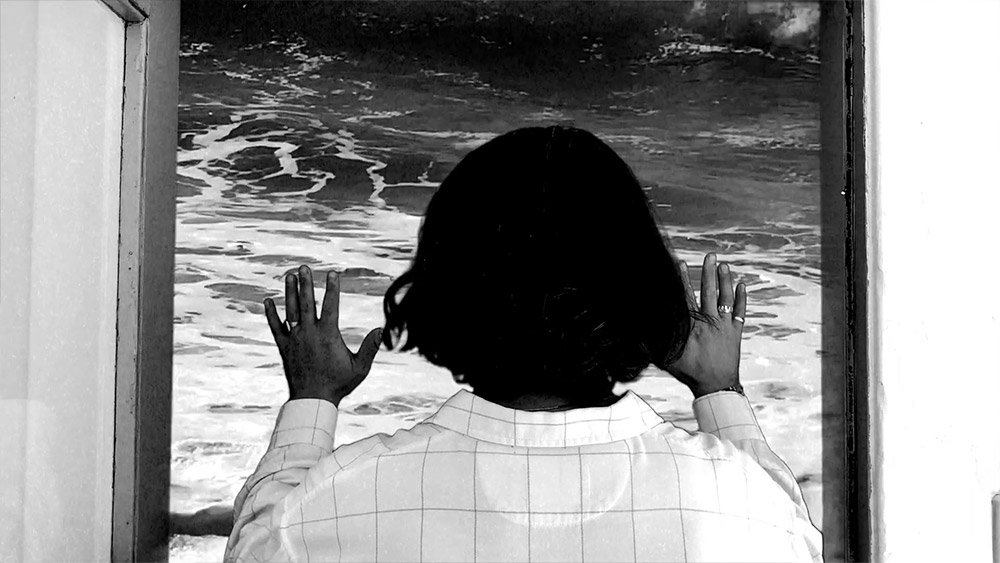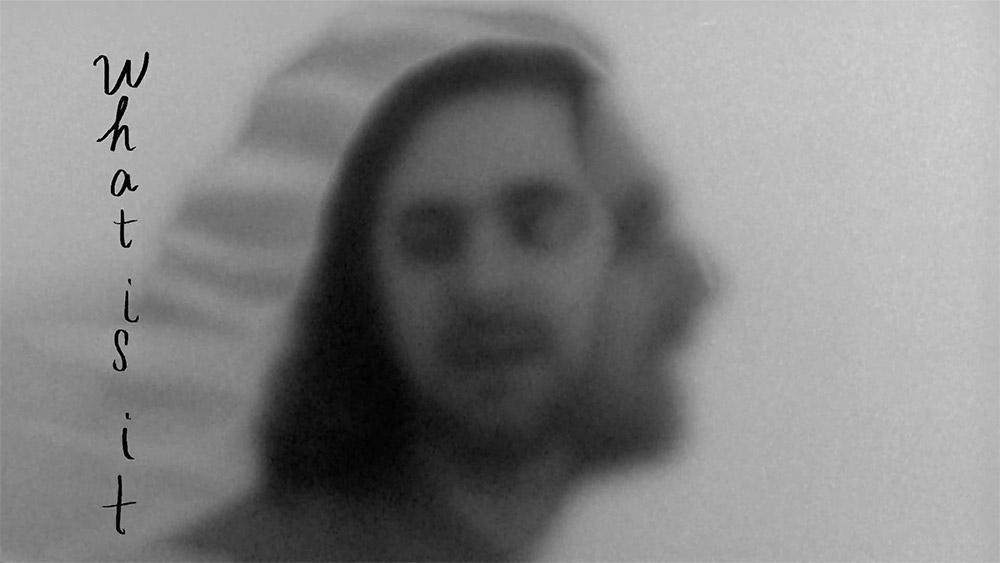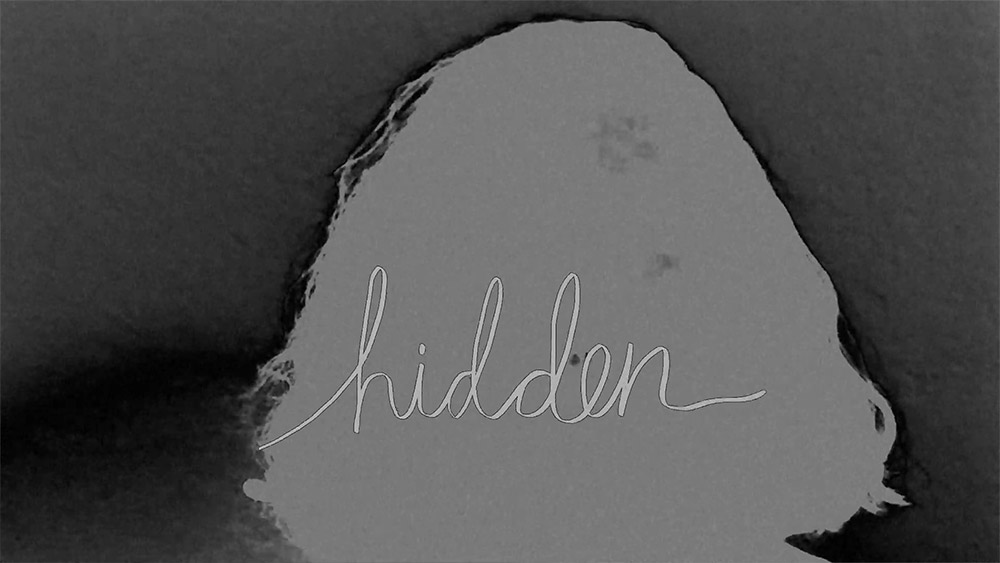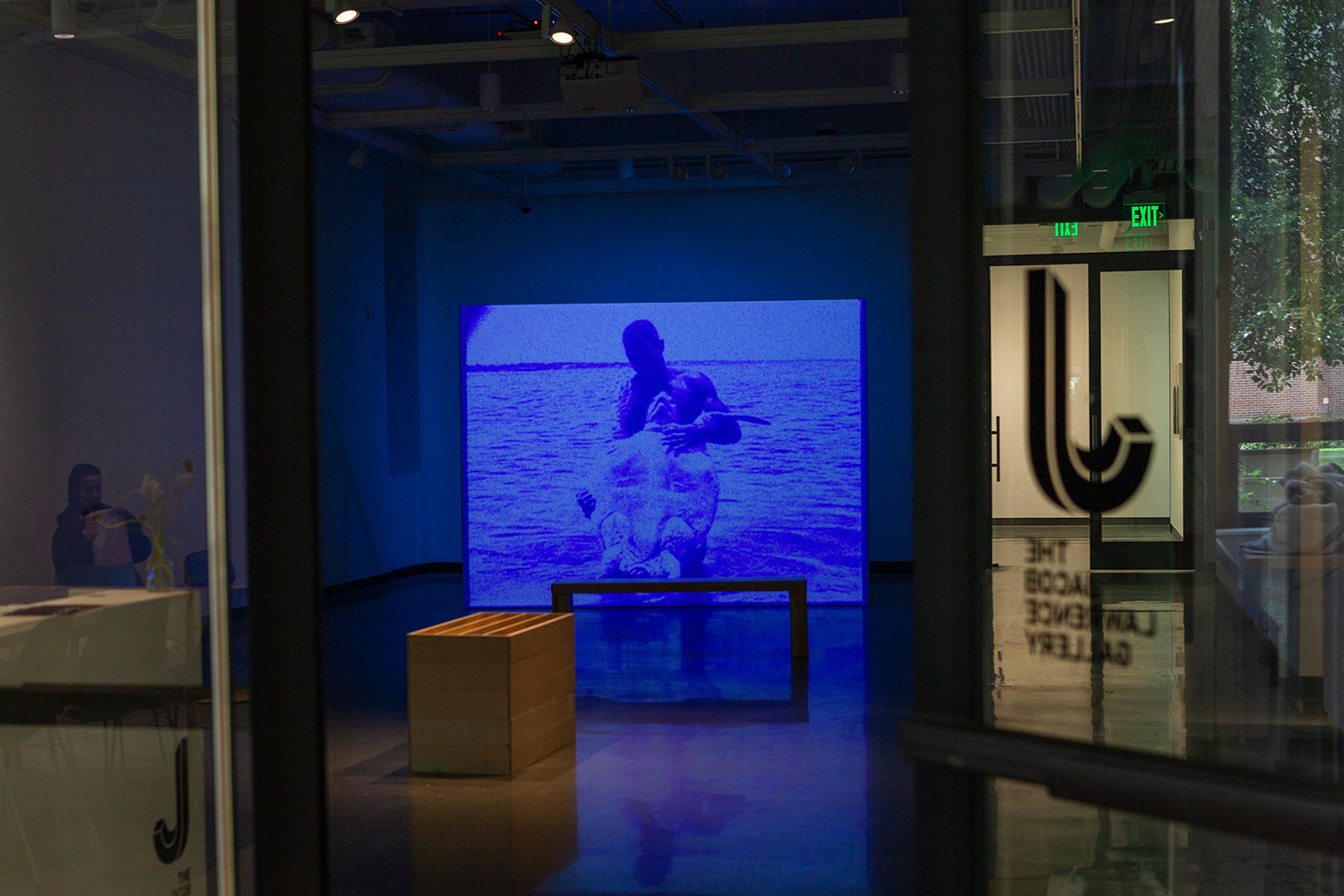
Watch: Half Shadow – “Moonless (Unmoored)” Music Video
“Moonless (Unmoored)” comes from At Home With My Candles, an album described as “mythopoetic paeans to the domestic uncanny — the mysterious and unseen worlds experienced at home.” This theme seems certainly to show prominently in this particular music video. Tell us how the concept emerged of bringing the sea outside into the home inside. What do these merging of worlds represent for you?
Jesse Carsten (Half Shadow): I’ve always questioned where the boundary between the “inside,” the inner world of an individual human being, and the “outside” exists. For me, it’s always been kind of amorphous. I have a lot of Pisces in my astrological birth chart, making me an emotional sponge. The outside bleeds into the inside for me quite a lot. So the door itself has become this incredibly loaded symbol. What would be on the other side of my door? What could be a suitable replacement for the world? My favorite landscape, the ocean, of course. In that sense, the ocean represents the inner world itself, the personal unconscious, all of the depth of a person. By replacing the Portland city sidewalk outside my door with crashing ocean waves invokes the mystery and vastness that really is inside all of us. All of the “doors” of our individual consciousnesses can and do sometimes open onto that landscape. I wanted to connect listeners to that place in sound, poetry, and vision.
I know that this piece draws from surrealism and that the album itself speaks a lot about dream realms and the subconscious. How do these elements come into play in your creative process, whether in the process of making music, creating the music video, performing, or otherwise?
Jesse Carsten (Half Shadow): Well, I’m a deep dreamer, and many of my songs are literal dream images, poeticized and turned into lyrics. In fact, I’ve had many ocean dreams, including one which was part of the inspiration for this song and video. In it, I was on a dark shore and a massive wave was approaching. As it reached the shore, and I was about to be obliterated by it, I fearfully raised my hand to protect myself, and the wave froze in mid-air, like a video being paused. I approached the wave and had the impulse to knock on the wall of water. When I did, a door-shape drew itself in the face of the wave and it swung open to reveal a dark, glowy, warm inner chamber. What an amazing image for a song lyric! Like a ready made.
That’s one way it enters in, but I also just see reality in a fairly psychedelic, surreal way. Little visions come to me. I was thinking of making this video, and I suddenly saw the ocean at the door in my mind. I knew it was the right image; it just spoke to everything perfectly. So I took that vision seriously, wrote it down and tried to figure out how to make it real. Maya Deren’s films were also a big inspiration for this video. There’s a part of her movie, Meshes of the Afternoon (1943), her most famous film, in which the film-image, a domestic scene, literally breaks, busting into shards of glass which fall away and reveal an ocean. I was trying to invoke a similar kind of “breaking through” with this song and video. I think that breaking through is, to me anyway, at the heart of the surreal — the place where image and consciousness open up unexpectedly into something dramatically uncanny.
Briefly, I’ll say about performing that I really try to create an otherworldly dimension in my sets. I do this in a very lo-fi way, though. Very much the opposite of the type of drama that most professional musicians try to create around themselves for performance [with] smoke machines, lighting, exquisite costumes, perfect sound, expensive gear on high, seemingly unreachable stages. An unbreakable fourth wall preserving a perfect illusion. I do all the opposite things: constantly breaking the fourth wall, singing wildly, heartbreakingly, involving the audience in the performance, asking them direct questions, looking people in the eye, improvising, showing the homemade, punk trappings of the show. Making people question: wait, is an artist allowed to do this? By breaking the performative illusion, something very magical sometimes happens. Ordinary reality becomes otherworldly without losing any of its ordinariness. I think that might be the definition of the uncanny!




You conceptualized, directed, and edited this piece yourself. What is your history of working with this medium, and how does this particular music video fit in with your audio-visual creative arc? How has it evolved?
Jesse Carsten (Half Shadow): When I was unable to pass some of my classes in high school, I was enrolled in a trade school which I went to in the afternoons. I studied Television Video Production. Basically, we would tape and edit down these little talk shows for local TV. But in my spare time, I made weird art videos. I went to art school for college and kept working on them. They were usually these abstract, psychedelic, performance art videos that I would be in. I would usually be talking, reading poetry, layering colors and sound. I would say this video is an extension of all of that. I like being in it and surrounding my own image with textures, designs, words. I think of it almost like a living collage: I keep adding images and changing the rhythm until some kind of poetic, visual saturation is achieved. All my music videos have had this tenor to them. I think this is the first one that takes up surreal imagery in an overt way, though. That is also why it is black and white — to acknowledge the history of experimental film and its surreal beginnings. Plus, black and white can have these powerful contrasts that have an inherent poetry that I find sensual and powerful. That tone is very Half Shadow to me.
Walk us through the process of creating and animating the hand-written text.
Jesse Carsten (Half Shadow): I realized the first half of the video, before the big anthem, was maybe lacking a little and decided that handwritten text might be an interesting way to complicate things. I was thinking of [Jean] Cocteau’s handwriting in his films and his visual art, which is very sort of swirly and scribbly. So I animated each lyric while looking at the image it would fit into and drew it so that it would dynamically cohere with the shot. I didn’t want them to be like subtitles, but more a living part of the image. I think it worked! The animations were done on an iPad, as were the animations for my other recent video “Song for the Garden,” which has these expanding, floral growth animations throughout.
How long did the filming versus post-production process take?
Jesse Carsten (Half Shadow): I captured the ocean shots on one gloomy day at the Washington coast while I was mixing the album. I was at the Sou’wester Lodge in Seaview, taking part in their artist residency. I would walk in the rain every day on the beach in between mixing sessions, taking photos and videos. I thought the shots might come in handy later. Then we shot the ocean-door shots on our last day of living in our old house. That’s why the space is empty; we had moved everything out already. It was literally the last thing we did before locking up and saying goodbye forever. There was one more day of shooting in our new home, just some lip-syncing shots. Then it took me about two weeks of editing time. We had just had a baby, so I was up late at night kind of manically putting it together, when I wasn’t needed for immediate care.
Is there anything else you would like to add? Interesting anecdotes, fun stories, behind-the-scenes extras, etc.?
Jesse Carsten (Half Shadow): Actually, the day my partner and I shot the ocean-door scenes was really wild. Our neighbor, it turned out, was having a mental health crisis, and I think got triggered by the blue screen that we had hung up in the open doorway. It probably really stood out from the street and caught his wandering attention. We were about to do a final shot when a big, dirty steel shovel burst through the blue paper and came crashing down with a metallic thud in the living room. Then a rake and a broom. It was kind of terrifying! We had no idea what was happening. Our neighbor was out there shouting wild things and cursing at us and such. I stuck my head through the hole in the blue paper and was like, “Are you okay!?” I thought I had genuinely offended him somehow and he was taking revenge. But then I realized he was just going through something intense internally. My partner was like, “What are you doing looking around out there?! Close the door!” The neighbor left quickly but he very nearly injured us! We realized the shoot was over, cleaned up and left. Talk about outside and inside colliding!
What do you hope that others feel or take away from this particular music video? How about the album at-large?
I hope people feel transported to this dark-sparkly, liminal, half-imaginary space I’ve made. It feels important to share these very personal, intimate, dream locales that we each have, at this point in history. We’re so wrapped up in a false version of sharing, like creating “content” for Instagram, which actually means nothing. But seeing a real private world, full of beauty and weirdness, I think helps the broader world to see itself; to be less afraid to embody the strange interior that we all have, but that we tend to hide from others. Those places are miraculous! This video is a miraculous, little piece of my world, and I hope it’s inspiring.
I have a similar hope for when people hear the record. It really is like a house I built — a little house in sound. I hope you’ll come and stay in it for a while and indulge in the off-kilter elegance that’s there. It’s sort of like a fun house or a house of mirrors. There’s lots of things to see, and there’s a lot of illusions to keep you in the moment, to delight and dazzle. I tried to make each song like a room — I even thought of them as these little dioramas with all these fun objects in them — and the instruments and sounds were like placing furniture in each room, coloring it, lighting it, opening the window. In these spaces you can feel my emotions, and bask in the kind of interior world that I live in all the time. It’s ordinary, epic, and uncanny all at the same time. You might even hear some ghosts cooing in the darkened bedroom. And each door in the endless hallway opens out onto another otherworldly landscape. Keep an ear open!

Half Shadow’s Jesse Carsten
Ω






